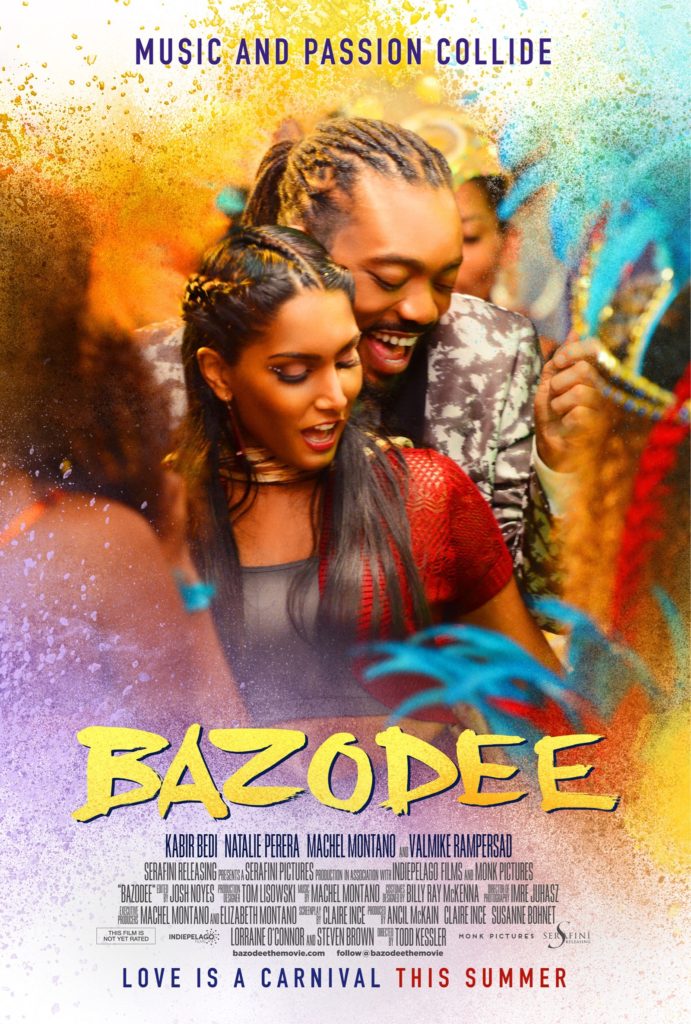 An African male is in love with an Indian female.
An African male is in love with an Indian female.
At the 2017 T&T Film Festival, this was the theme of two well-publicised local feature films being screened: Green Days by the River and Moko Jumbie, and perhaps the lesser-known Back to Freeport. These films came hot on the heels of another recently-screened local film titled Bazoodee with the same theme.
2017 also saw the release of another incarnation of the King Kong motion picture (Kong: Skull Island) by Warner Bros. The movie is often interpreted as a depiction of the Black man’s love for a White blonde woman for whom he is willing to risk danger and even death.
But why the focus on relationships between Black men and non-Black women? Why totally ignore sexual relationships between Indian men and non-Indian women? Is there is sinister plot to emasculate, marginalise and erase images of Indian men in the mass media? This belief is based on the virtual absence of Indian men in advertisements in the print media, billboards and on television.
Shouldn’t filmmakers also base their scripts on sexual encounters between Indian men and White women? There are at least three Caribbean novels featurng Indian men and White women: Tiger and Doreen in Samuel Selvon’s Turn Again Tiger (1958), and Romesh and Petra in The Plains of Caroni (1970), as well as Ranjit and Sandra in V.S. Naipaul’s The Mimic Men (1967).
There are intimate inter-racial liaisons between Indian men and Black women such as between Santosh and the hubshi woman in Naipaul’s short story collection, In a Free State (1971). And Ranjitsingh and Ajourda taste all the colours in the menu in their Port of Spain office in Peter Ramkeesoon’s sexual blockbuster novel, Sunday Morning Coming Down (1971).
In his book, Black Skin White Masks (1952), the Martinique-born, Afro-Caribbean physician, psychiatrist and philosopher, Frantz Fanon, has framed a theory to explain this obsession of Black men.
Fanon begins Chapter 3 with the following passage: “Out of the blackest part of my soul, across the zebra stripping of my mind, surges the desire to be suddenly white. I wish to be acknowledged not as a black but as a white. Now … who but a white woman can do this for me? By loving me, she proves that I am worthy of white love. I am loved like a white man…. I marry white culture, white beauty and white whiteness” (page 46).
Fanon explains that the Black man wants to be accepted and loved by the non-black world. By entering into these inter-racial relationships, the Black man seeks to “achieve denaturalization and (to use a loathsome word) deracialization.” He tries to emancipate himself from the bondage of his skin, his race and his culture and hope to have children that would not look like him (ref. Michael Jackson).
Post-colonial studies and critical theory explain that when Black men rise in educational, political and financial status, their desire is to have an Indian, Mixed (“Red” or “Dougla”) or White woman to enhance their status.
In a chapter on images of men and women in calypsoes, literary critic Gordon Rohlehr (1998) categorises “Idealised women” as the White woman, the High-brown woman and the Indian woman. Rohlehr observes that in the Black calypsoians’ confessions “lies the self-contempt of the black man, who considers himself unworthy of the woman of colour whom he desires…” (page 261).
This desire by Black men for Indian, Mixed (“Red” or “Dougla”) or White women is the major cause of the destruction of the African family which is characterised by absent fathers, female-headed households and illegitimate children. In his MA Thesis submitted to Clark Atlanta University in 1996, Booker Edwards found that in African families, boys without fathers tended to become more gang-affiliated than those who had a two-parent home.
In discourses on race and beauty in post-colonial societies, the Black woman is often not seen as a role model. When straight-haired but brown-skinned Janelle Penny Commissiong of T&T was crowned Miss Universe in 1977, it was a momentary rupture to a long tradition of white beauty.
In an article entitled “Contesting Beauty” in ReVista: Havard Review of Latin America 2017 edition, Elizabeth Hordge-Freeman states that the ways in which the perception of beauty negatively impact Black women have seldom been discussed in the context of racial prejudice.
In the Americas and the Caribbean, Indian, Mixed (“Red” or “Dougla”) or White women are used in visual advertisements in newspapers, magazines and billboards to sell products and services. The subliminal message is that these colours as well as thin lips, narrow nose and straight or relaxed hair are promoted as being superior.

is a full-time anthropologist at the University of Guyana (UG) and Fellow of The Eccles Centre for American Studies, British Library (2022-23). He is a former Assistant Professor at the University of Trinidad and Tobago (UTT). He obtained his Ph.D. in Anthropology from the University of Florida (UF). As a doctoral student, he won a Florida Caribbean Institute Award, an A. Curtis Wilgus Grant, and an Organization of American States (OAS) Fellowship.
Mahabir received a National Award (Hummingbird Silver Medal) for his contribution to education in his country in 2011. He was among 50 recipients who received a Distinguished Alumni Award from the UWI Alumni Association.
Mahabir is the author of 12 books to date.
